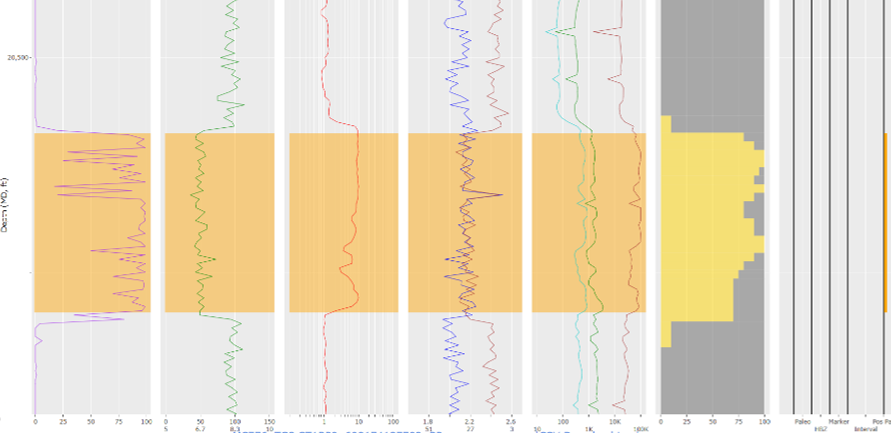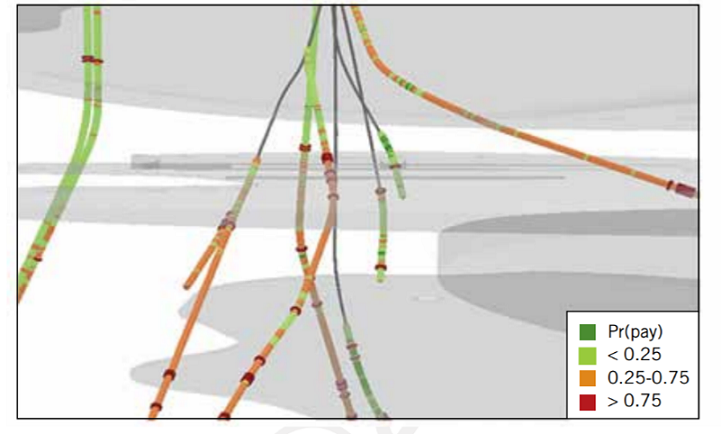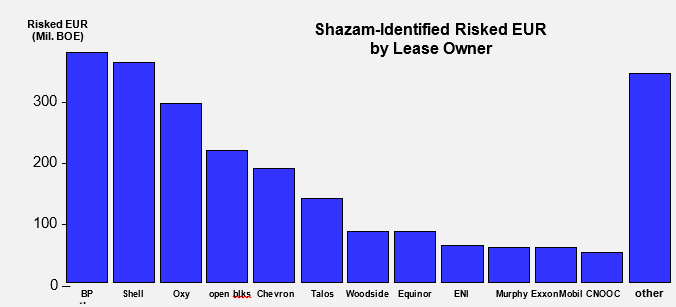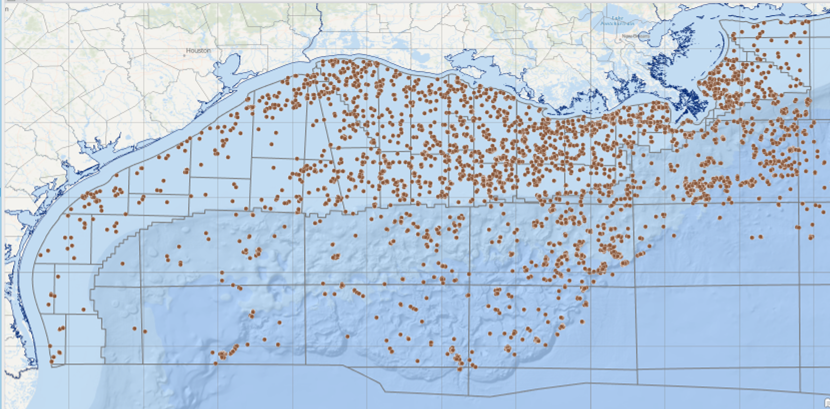
 Figure 1. A well in Mississippi Canyon analyzed with Shazam. A potentially productive unproduced accumulation is identified in gold, associated with a Shazam probability of pay greater than 75% (dashed line in track 1).
Figure 1. A well in Mississippi Canyon analyzed with Shazam. A potentially productive unproduced accumulation is identified in gold, associated with a Shazam probability of pay greater than 75% (dashed line in track 1).
 Figure 2. From GOM3, a 3D map of the Mars-Ursa field in which boreholes are legended by the Shazam-estimated probability of pay. Existing reservoirs are in translucent gray. This type of mapping highlights where identified unproduced accumulations are with respect to existing productive accumulations.
Figure 2. From GOM3, a 3D map of the Mars-Ursa field in which boreholes are legended by the Shazam-estimated probability of pay. Existing reservoirs are in translucent gray. This type of mapping highlights where identified unproduced accumulations are with respect to existing productive accumulations.
 Figure 3. Gulf-wide risked BOE EUR in unproduced accumulations identified by Shazam, divided by lease owners, as of Jan. 2025.
Figure 3. Gulf-wide risked BOE EUR in unproduced accumulations identified by Shazam, divided by lease owners, as of Jan. 2025.
 Figure 4. Shazam coverage as of Jan. 1, 2025.
Figure 4. Shazam coverage as of Jan. 1, 2025.